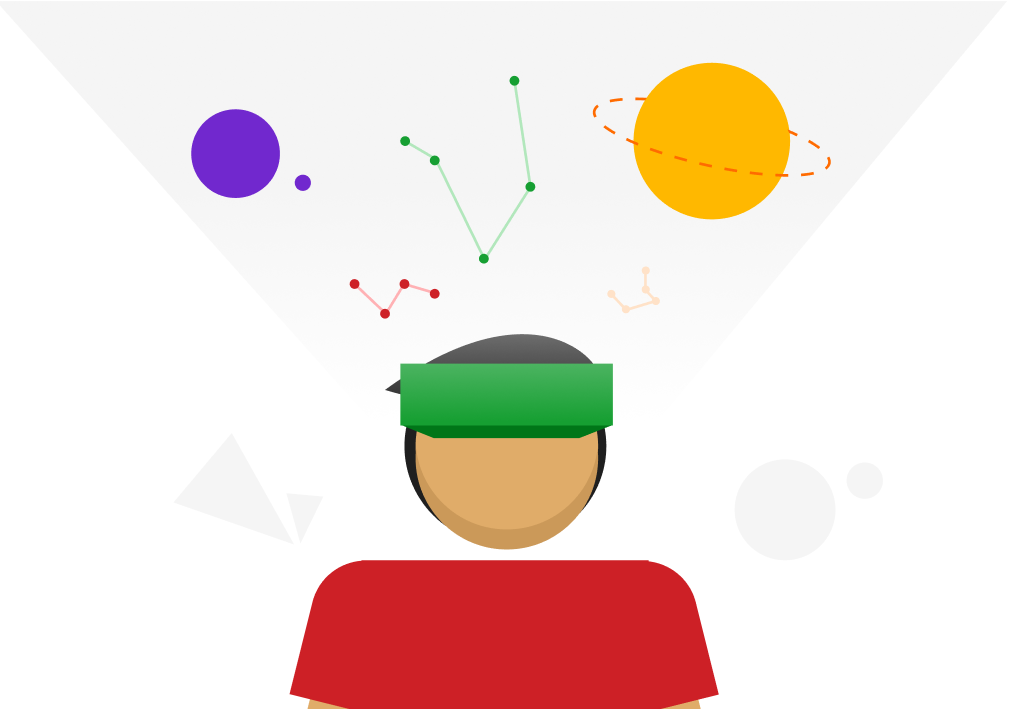This project follows a design thinking approach towards solving the common problem of people having a fear of public speaking. Enjoy 🙂
Initial Design Challenge
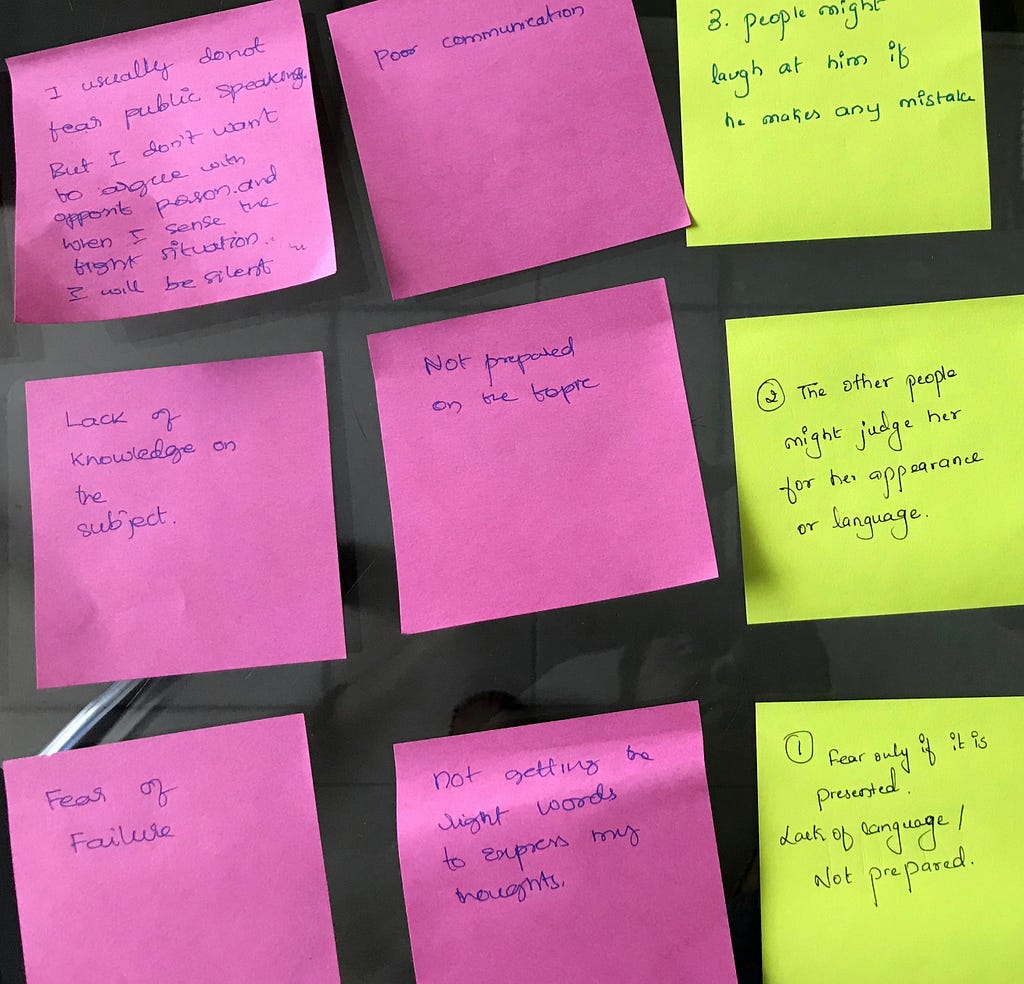
We started with thinking and listing down the problems we, our friends and people surrounding us faced in daily life at home, workplace or while commuting.We listed down around 50 problems in total and conducted a group voting session to categorize similar problems, we then narrowed down to some on the basis of the prevalence of the problem and how much social impact can be created by solving that problem. We narrowed down to “fear of speaking in public situation like meetings, auditorium etc”. We identified this as a major problem in present day world where everyone has some business with talking in public or at workplace.
Empathizing with the user
We started with some basic secondary research to know the difference between ‘Phobia’ & ‘Fear’. We went through related articles, research papers through the Internet. We generalised that a ‘Phobia’ in general terms is not curable without medical assistance. We tried to understand the journey of how a person faces the fearturns from a novice public speaker to more efficient speaker during presentations since this is a place where people generally ought to fear the situation. Based on this secondary research, we created a questionnaire to investigate about our potential user’s need, motivations and frustrations and conducted 10–12 semi-structured interviews with peers, students and working professionals.
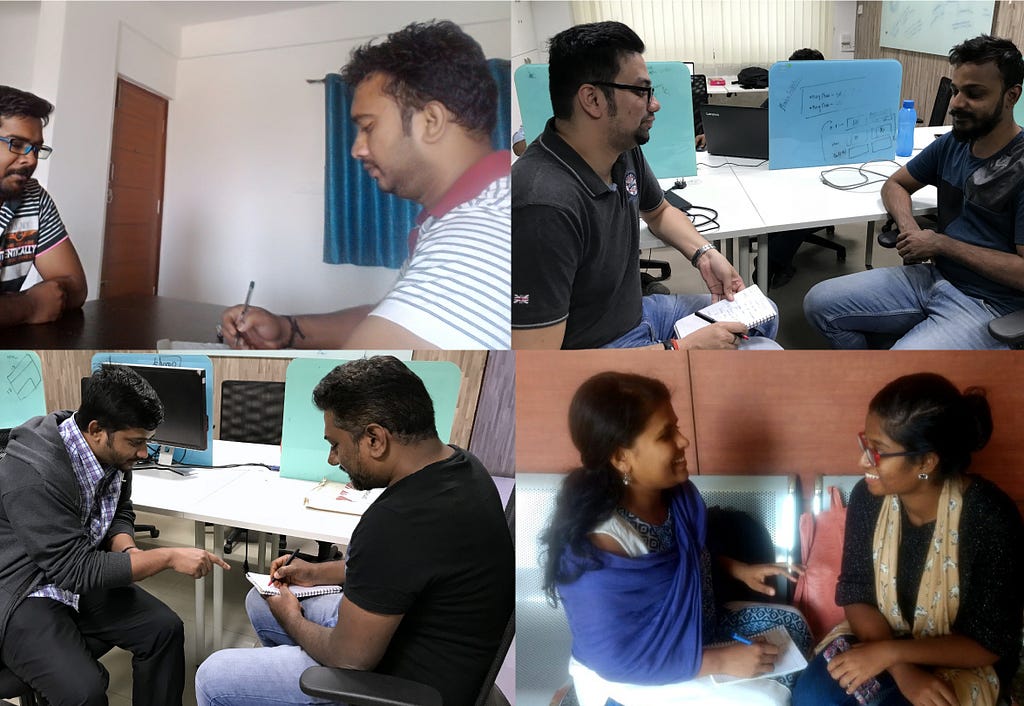
Analyzing and Sythesizing Research

Now since we had some much data and understanding about our users, we started analyzing the data to and synthesizing insights from our research using Affinity Analysis. We found out patterns and behaviors of how people react and plan in public speaking situations to generate certain insights. Following are our insights from the research:
Practice before performance
“Lack of Knowledge and words”, We analyzed that people are more frightened /scared when they are not prepared. Through our primary and secondary research we concluded that there has to be proper/ at least basic preparation before any presentation or speech to amp up the confidence.
Increasing comfort level
“People might laugh at me”, this is one of the perception of person while presenting/giving any presentation / speech. This was categorized based on user responses, some of the users had past experience which led them to think in this way, while some user over-thinks about a situation that is supposed to happen in future.
Provoke positive thinking
“I see things going bad in my mind” this was one of the situation where a user over analyze things and get frightened. Again it is related to some of the past experience/ incident happened to them. With user interviews and studies we came up that positive thinking towards the presentation/speech needs to be worked on.
Increasing self confidence
“If more pressure, I get confused and scared.” most of the user we interviewed said that they are not confident enough about taking in public. They get scared and frightened if there is more pressure on them. One of the interviewed person said he gets “frightened by just looking at crowd”. At the end of affinity analysis, we had an understanding of our users and further created personas, we also understood the context of the user by writing their user stories and redefined our problem statement based on the research.
User Persona and Stories
Based on the user research we created certain personas which helped us cater to most of our potential users and keep these users at the centre while making any design decision. We also created user stories to understand context of our users through a typical day in their life.
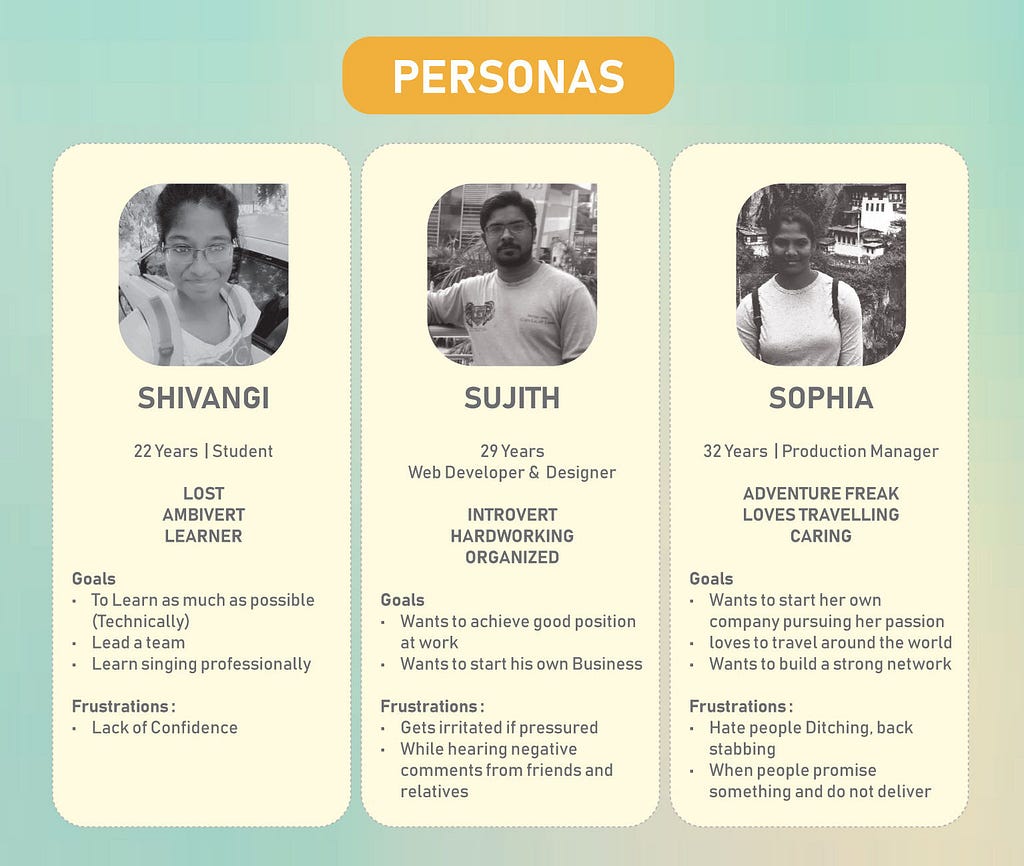
Redefined Problem Statement
After getting deeper insights on the topic, we redefined the problem statement from a human centered manner. We identified that user’s primary fear is judgement by others, not able to express themselves, past experience and overthinking.
How Might We (HMW’s)
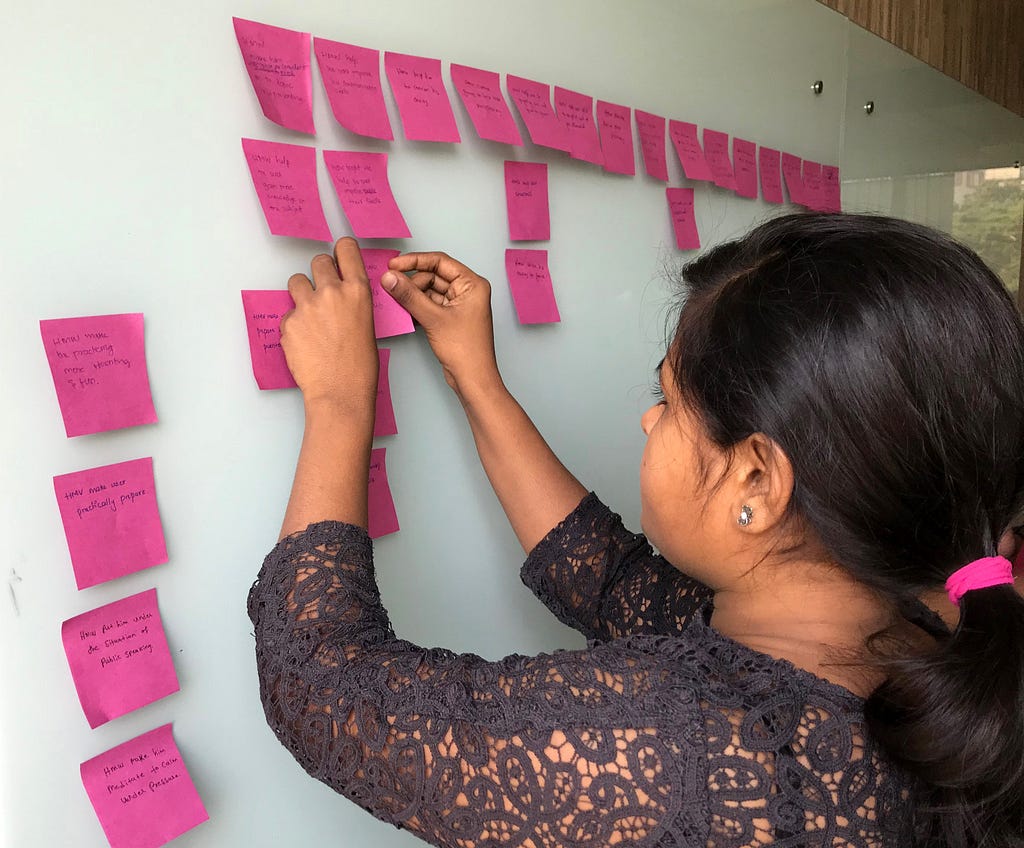
Based on the problem statement, insights and personas identified in the research, we created How Might We questions to bridge the gap between insights and ideas. HMW’s helped us think out of the box ideas in different directions. 1. HMW can transform his anxiety into focus more on his speech. 2. HMW can help him to focus more on his performance rather distracted by audience face expressions. 3. HMW can motivate him not to focus on many things. 4. HMW put him under situation of public speaking. 5. HMW help the user to face the fear. 6. HMW make his friends to help him in practicing before presentation. 7. HMW make the practice more interesting. 8. HMW help him control his anxiety. 9. HMW create games to help him dealing with multitasking. 10. HMW make user practically prepare. 11. HMW make user not to overthink and stress out. 12. HMW amp up the confidence so that the user does not fumble or tremble at any point of time. 13. HMW help user develop personality skills to improve confidence. 14. HMW help the user stick to the point and not get distracted. 15. HMW help the user not to run from a scenario and face it.
Brainstorming about ideas
Based on the How Might We questions created we started brainstorming to generate wild, creative, child like ideas for each HMW question. We focused more on quantity than quality of the ideas in this step.

Narrowing down solutions

After a lot of brainstorming and we narrowed down to some ideas based on the votings and by using Bull’s eye diagramming. We voted each solution and categorized the solutions into primary, secondary and tertiary in the Bull’s Eye Diagram. Primary circle of the diagram had the most voted solutions.
Design Directions
From bull’s eye, we derived design directions from the solutions which were in primary circle of Bull’s eye diagram. We narrowed down to some of the solutions like following: Voice-overs: To provide the walkthrough of the environment and surroundings. Situations: We thought of learning things as levels based on the challenges faced. Challenges: We came up with lot of real life challenges, that we can apply in increasing level of challenges. Rewards: Everyone loves rewards, after a user completes levels/challenges he/she would be rewarded accordingly.
Information Architecture
Keeping design directions and the design principles in mind we organized and structured the information identified from our research regarding the kind of challenges and levels a user will be provided.
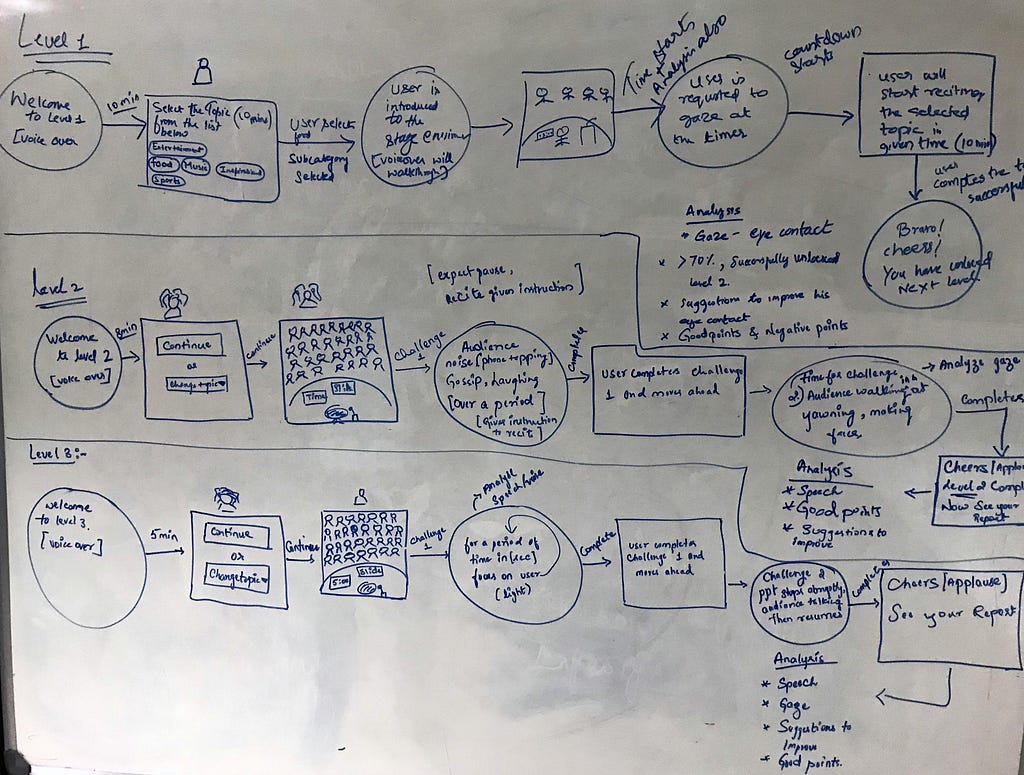
Storyboarding and Wireframing
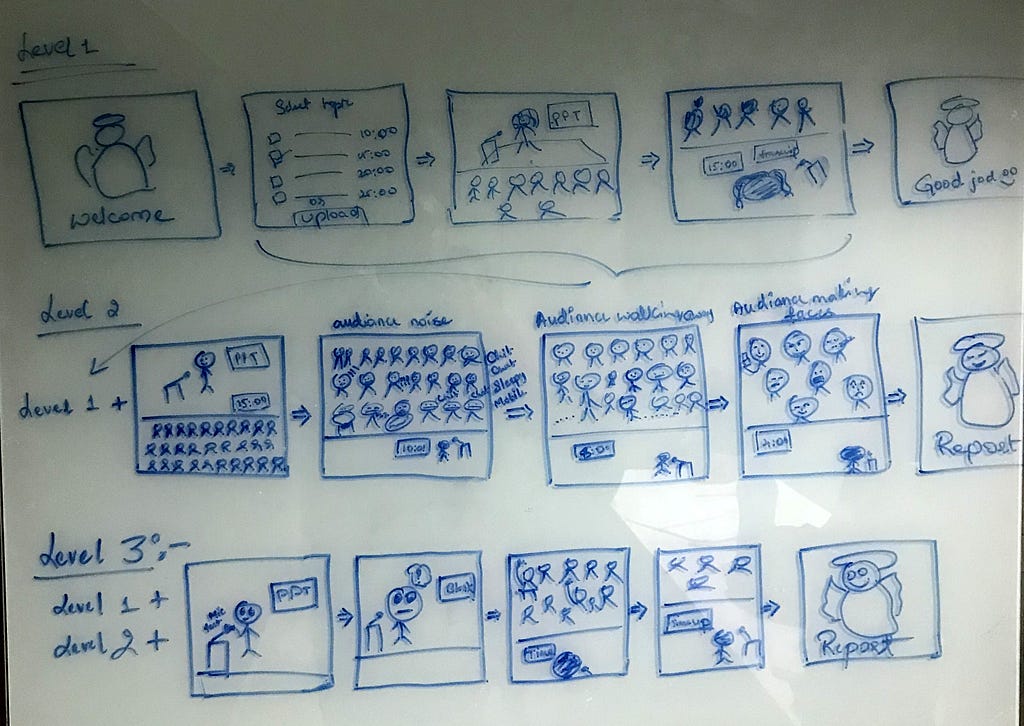
Now the challenge was how to make a user comfortable in front of the audience. So, we finalised on a Virtual Reality with a gamified solution as to allow the user to practise in front of the audience to build up his confidence.
High-Fidelity Mockups
These are the final high fidelity mockups of the virtual reality application, which are explained through the user journey.

Overcoming fear of public speaking using Virtual Reality was originally published in DSchool on Medium, where people are continuing the conversation by highlighting and responding to this story.
